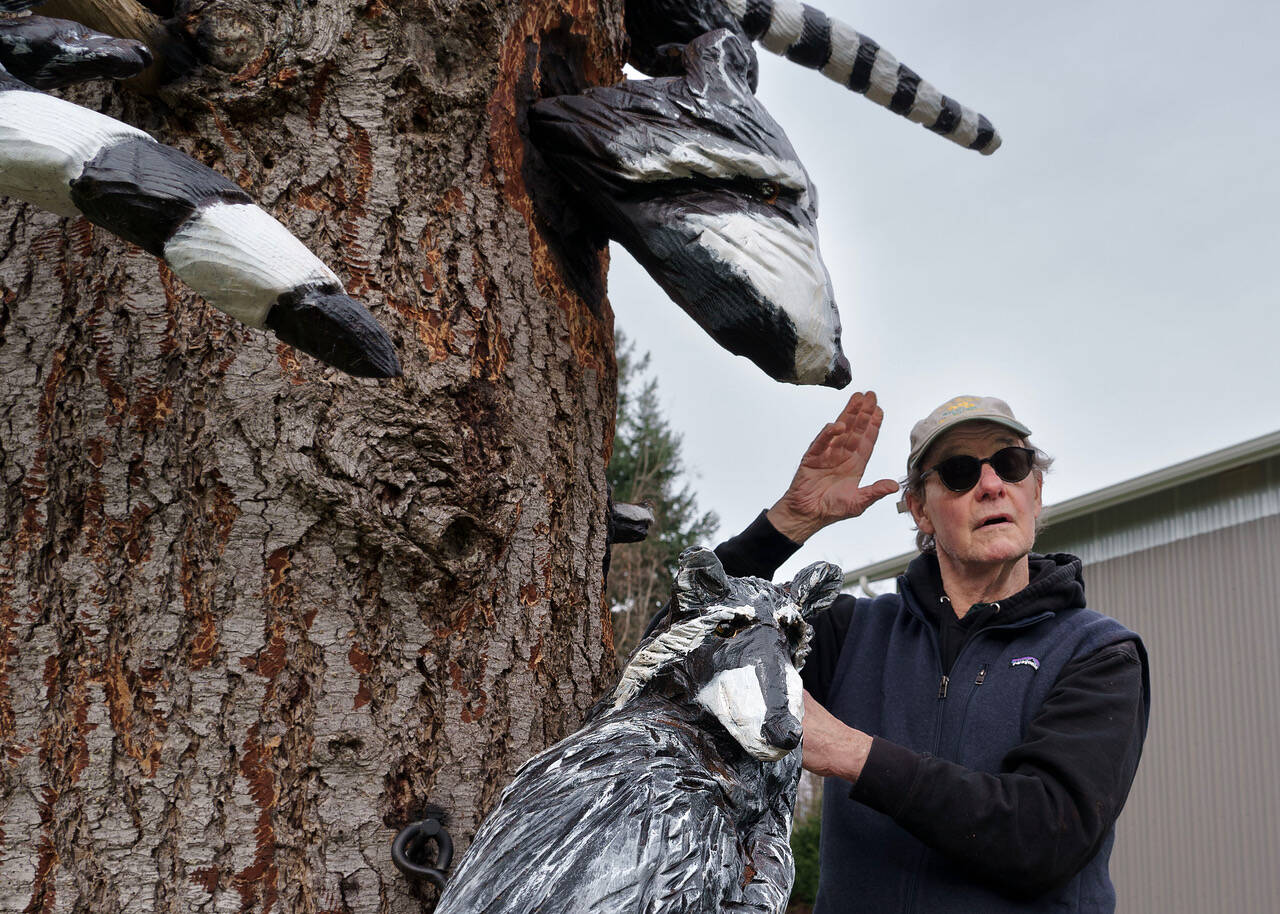Something is afoot with Pat McVay’s latest sculpture.
In fact, many somethings are busy crawling around, and burrowing into, a mature Douglas fir visible from Scatchet Head Road in Clinton.
The tree tells the story of “a little raccoon family going crazy,” as McVay puts it. The masked bandits poke their heads and tails out of the bark from every angle, which makes counting them a difficult task. Close to the ground, a set of cubs cling to their mother.
“Dad’s just loafing up there with one of the teenagers,” McVay said, gesturing to the top of the 10-foot-tall tree. “So it’s kind of a multi-generational gang of critters.”
To preserve the integrity of the old tree, McVay bore into the bark only a little to create the illusion that raccoons are tunneling into it. Screws and bolts hold the other pieces in place. Glass marbles lend a mischievous glint to the eyes of the trash-loving rascals.
“Probably woodpeckers will be coming in here and pecking on this – if they don’t get scared by the raccoons,” he said.
The idea for the commissioned piece was suggested by a South Whidbey property owner. Though McVay has carved many other animals before – from salmon to cows to eagles – raccoons were a new challenge.
McVay has been using chainsaws to carve wooden sculptures for over 50 years. The family name is synonymous with countless other projects around Whidbey Island, the Pacific Northwest and beyond.
McVay’s style differs from his siblings and other family members who carve because of his appreciation for folk art, which he said stems from self-taught artists such as himself who don’t have a formal art education.
“Because I like folk arty things, I tend to do more humorous things that are narrative,” he said. “They tell stories.”
A common myth persists that he uses only a chainsaw to carve his sculptures. In reality, McVay also uses an assortment of other tools, including grinders, sanders and a propane torch to char the wood. And of course, paint.
His work can be found up and down the island, from a giant acorn in Oak Harbor to a feathery installation in Coupeville’s Price Sculpture Forest to various signs and memorial pieces scattered around South Whidbey.
“Memorials are interesting,” he remarked. “It feels like someone’s on your shoulder looking over when you’re doing something for them.”
He’s also made props for theaters and movie sets.
His retirement plan, he said, is to keep working.
“I really enjoy the work, and I meet a lot of really nice people and it opens a lot of doors,” he said.



